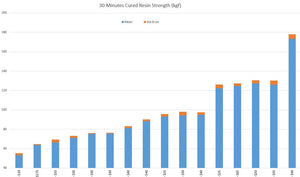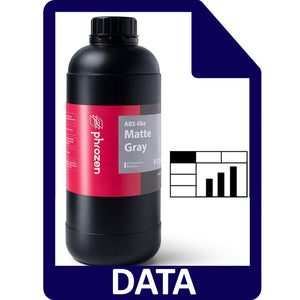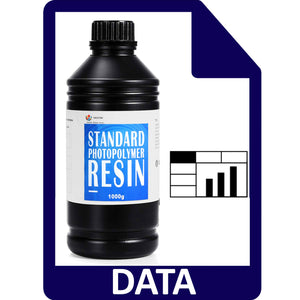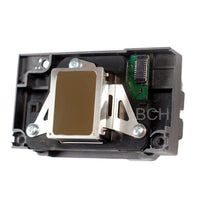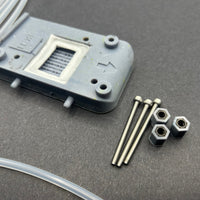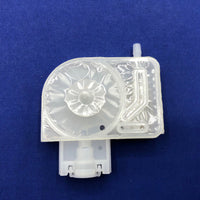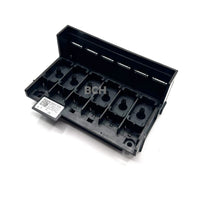
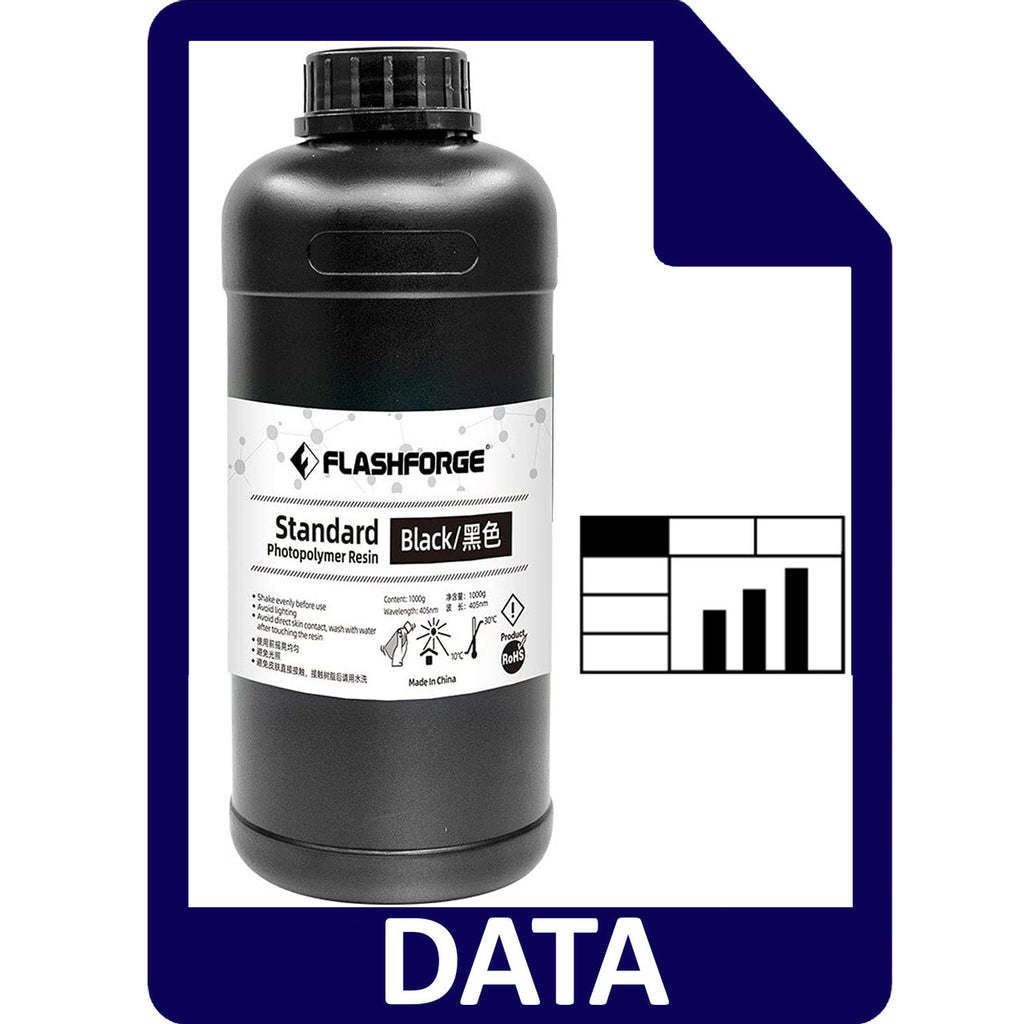 Roll over image to zoom in
Roll over image to zoom in
3D Resin Strength Data - FlashForge Standard Photopolymer Resin
$3.99
Compression Strength Testing Results
Welcome to our downloadable product for compression strength testing data for 3D resin. This product contains valuable information for those in the 3D printing industry who want to ensure the strength and durability of their resin-based prints. Our comprehensive testing data provides insights into the compression strength of various 3D resin materials, allowing you to make informed decisions about which resin to use for your specific application. By downloading this product, you will have access to reliable and accurate data that can help you improve the quality of your 3D printed parts and products.
Downloadable Files include:
Data
Below are the key points of our compression strength measurements (kgf) for 3D resin:
- We conducted 60 compression strength measurements for uncured resin.
- We conducted 60 compression strength measurements for cured resin with a 30-minute curing time.
- We conducted 31 sets of 5 compression strength measurements for resin that cured from raw (0 minutes) to 30 minutes, with 5 samples in each set.
Sample Results
Based on the results presented above, there are several ways you can utilize the data. For instance, you can compare the data with other brands/models to determine which resin is stronger. Additionally, we have provided sample tests and summary graphs for your convenience.The results presented below are for illustrative purposes only and should not be taken as the actual results you will obtain. These examples are included to give you an idea of the type of results you may expect from the downloadable files provided.
One of the statistics we have included compares the raw and cured data. From a sample test, we observed that the cured group had a mean strength of 75.197 kgf, while the uncured group had a mean strength of 59.368 kgf. This indicates that the curing process increased the strength by 27%.

The second point we'd like to highlight is the comparison graph of raw and cured resin. This plot is based on data sets 1 and 2, with the Y-axis representing strength (higher values indicate greater strength), and the X-axis representing the sample sequence. It's important to note that the sample sequence is not paired - for instance, sample number 5 in the raw resin group has no correlation to sample number 5 in the cured group.
From the graph, we can observe that cured resin (represented by open circles) generally exhibits higher strength compared to the uncured ones.

Our third point highlights the effect of curing time on the strength of 3D resin, as depicted in a graph based on data set 3. We conducted curing at one-minute intervals from 0 to 30 minutes, with five samples collected for each time interval.
Upon visual inspection, we can deduce that resin needs to be cured for a minimum of 15 minutes to achieve optimal strength. The data can be further analyzed using statistical methods such as nonlinear regression using Weibull model.

Here are some additional details about the testing methodology:
- The strength test unit used was kgf.
- The samples used in the tests were square-shaped, measuring 20 mm by 200 mm, with a thickness of 1 mm.
- We conducted the tests using a digital push-pull meter.
- For more information about the testing setup, please refer to the video provided below.
Data from the Manufacture

Related products
Complete Your Purchase
Categories
Add your product to the cart to view shipping rates. We've delivered to 289,762 customers in 149 countries.

Sign up for our newsletter to get weekly coupons and tips on printer refills and repairs.
Got a question? Don't hesitate to email us at support@bchtechnologies.com
Subscribe to Kevin's YouTube channel for the latest tips on printer repair and maintenance.
Recently viewed

Yes, you can easily make your own with a washed out water bottle but these come ready to go and are a better quality plastic. I won’t be using mine as a waste tank since I have a my CISS but will be using the bottle for my maintenance and cleaning solutions.
David Sustaita
XLARGE Waste Ink Collection Tank Combo with Small Tube for Epson (AS-EP-WASTE-25MM)

I can’t say enough about this company! Sent my main board in for repair and they were fast and the cost was reasonable. They are also quick to respond. This is not the first item I’ve purchased from them and won’t be the last. Also, the YouTube videos are a must to watch!
Nancy Donaldson
Fast Track Mainboard Repair: L1800, XP-15000, ET-15000, WF-7610 7620, WF-7110, WF-7710 7720, ET-8550, ET-2720, ET-2750Printer Mainboard, Formatter Board, Motherboard Troubleshooting and Repair

I have an old Epson ET-2750 eco tank printer, which I have used for years, and since it is uses refillable ink tanks, have used very little ink over the years. I love this printer because I can print lots and lots of pages, including double-sided at very low cost, and it is very reliable. I recently had a paper jam, which is very unusual. When I took off the back panel to clear the jam, I accidentally dropped it on the floor, and when I replaced the back panel, the printer jammed every time I tried to print double-sided. I found a small plastic piece on the floor that fit on one end of the roller, but didn't realize I was missing the other end. I eventually noticed that there was a gear on the back panel next to where the roller fits into the panel. I deduced that I must be missing a gear to pop into the end of the roller, to mesh with the gear on the panel. I couldn't find the missing gear anywhere, and figured my cats must have lost it or my wife might have swept it up when sweeping the floor, and discarded it. Through a Google search, I found BCH Technologies, ordered the part from them, it fit perfectly, and now I can print double-sided again on my faithful old Epson printer. I very much appreciated being able to get the missing part from them. I thought the price for the part and shipping was high for such a small part, but that was the only down side.
Daniel Parker
Duplex Roller Feed Gear for Epson Printers




